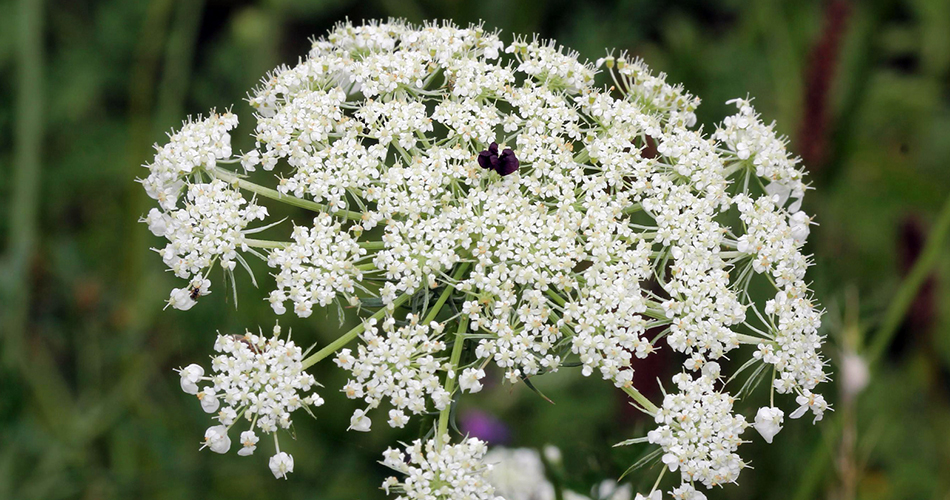Queen Anne’s lace. The tiny flowers of the wild carrot grow in umbellate (“little umbrellas”) to form a flat topped cluster that looks like lace. They give the weed its prettiest nickname—Queen Anne’s lace. The flowers usually are white, but they may be faint pink or pale greenish yellow. The central flower, when the blossoms of Queen Anne’s lace fall the ripening fruit forms a cuplike, bristly cluster. It gives the wild carrot two more nicknames-bird’s-nest and crow’s-nest, of each cluster is sometimes purplish. Queen Anne’s lace is hardy and spreads rapidly.
If given a chance it crowds useful grasses from fields and pastures. This trait has given it another nickname, “devil’s plague.” The best way to control the weed in farming areas is to plow under all fields where it has taken hold. This should be done just before the plants are ready to bloom.
The wild carrot, like the garden carrot, belongs to the parsley family (Umbelliferae). It is widespread in America and thrives especially in the northeastern United States. It also grows in the temperate regions of Europe and Asia. The plant grows from 1 to 3 feet tall. Flower clusters are usually 3 to 5 inches across. The leaves are small and cleft two or three times almost to the central rib. The outer divisions are sharply cut and pointed. The scientific name is Daucus carota.


Be First to Comment